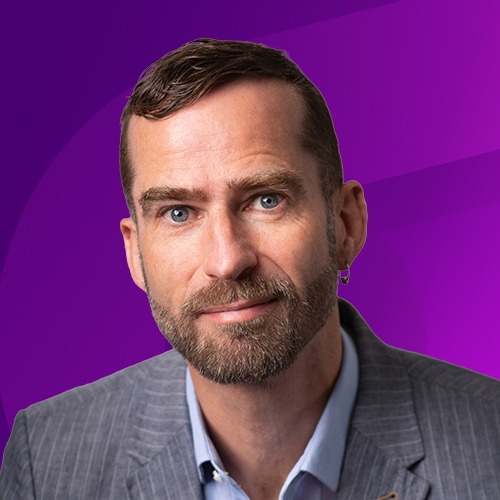The challenges of fast-paced change have highlighted the importance of Risk and Resilience. iluminr’s Gamechangers in Resilience interview series is all about showcasing the incredible stories of leaders who have mastered the art of helping their companies and communities not just survive, but thrive despite the unimaginable.
March is Women’s History Month. All month long, iluminr is celebrating the contributions of women who make our companies and communities stronger and more resilient.
Donna Speckhard is a Senior Risk Lead at Fannie Mae and contributes regularly as a Resilience Advisory board member for MIT’s Crisis Management & Business Resilience program. In her years as a consultant, she learned to use gamification, microsimulations, and other strategies to coach organizations through large and complex challenges. Donna is a creative problem solver, with extensive cross-functional expertise in supporting financial services, hospitality, Federal, State, local governments, and NGOs.
Q: How did you land in Resilience as a profession?
A: I started my career supporting space and missile defense programs where I (in simple terms) built multimedia productions for products for Congress. I decided to get my degree in Homeland Security and Public Safety with a minor in Law Enforcement since I was supporting these various defense agencies. I transitioned my role to support other entities doing counterdrug and human trafficking intelligence analysis. Some really dark work. I knew this was not something I wanted to do long term so I actively sought out more work that aligned more with my degree with clients like HHS, CDC, and FEMA plus other state agencies and international governments. I got to do some really cool and meaningful work which is a whole discussion in and of itself for another day.
This is where my role in resilience really came from building early pandemic plans, points of distribution planning, how to get executives or critical staff in and out of areas, protection of assets, developing exercise scenarios built around threats at the time like Anthrax, developing lessons learned and remediation strategies and so on and so on.
Q: What is a top-of-mind project for you right now?
A: Not so much a project but just really trying to be forward leaning when it comes to emerging risk trends. I have been reading and thinking a great deal about the impacts of Environmental, Social, Governance (ESG) and Artificial Intelligence. What these particular risks and impacts will mean for companies and their third parties also how we will assess and measure those impacts.
Q: You are known for your experimentation with nontraditional messages and modalities, getting out the message of Resilience. Tell me how this is shaping the conversations you are having with others in the space?
A: I think if you look back on what I said earlier about my background in storytelling, I like to think of unique ways to tell a story whether it’s doing a TikTok or posting about gamification, discussing the unique role of microsimulations, or even developing a resilience playlist (LOL- Paula you didn’t think i was letting that go).
It’s important to use technology in a fun but meaningful way. Our jobs as resilience professionals are not always given the credit or importance this role deserves. Many people still think of Risk and Resilience as the people with the clipboards asking you to do more paperwork and need more of your limited time or scarce resources. Thinking it’s very checklisty-audit function. This is not the case or the reality.
Our roles are very exciting, important, and can have high visibility when things go south! It used to be you had to pick one specialty in this role – Business Continuity, Security, Risk, or just Crisis Management. Thankfully, this is no longer the case. Organizations are looking for the resilience unicorn. Someone who is well rounded in all disciplines under risk and resilience. I can honestly say there is never a dull moment. That is why using different tools and methodologies to not only educate on our role but to drive home awareness on key parts of risk and resilience is so important.
Hot topics that come to mind currently are around gamification, microsimulations versus when to use exercises, and ChatGPT, climate change, supply chain and ESG metrics. Coming out of COVID, we saw a lot of discussion around nth party risk and supply chain end-to-end visibility.

Q: Different generations have varied expectations of Resilience. How do you think about that?
A: I talked a little about the changing face of our profession and the use of technology and storytelling for our industry. The old way of doing things such as having a plan sitting on a shelf in a binder are no longer good enough. Lengthy BIAs that are only as good as the last update typically done annually should be a thing of the past but you would be surprised how many companies still use these methods. Also the way we train used to be months of planning an exercise or tabletop (and they have their place for sure) but we need to adopt fresher, newer, scalable, agile, approaches because technology changes and so does risk at a rapid pace.
The most success I have had is finding short, quick, engaging activities that help drive awareness and can be reused and done frequently for muscle memory. I am very excited with the direction our industry is heading – there are so many new challenges and technology/tools out there to support us in our roles.
Q: We are celebrating Women’s History Month. How has being a woman influenced your career experiences?
A: I am going to date myself a bit here but I can remember being the only woman in a room of resilience professionals during planning for and responding to crises. Many instances of those outside my team thought I was administrative staff. I think it taught me early on to have thick skin and not to take things personally. I have been fortunate enough to have great managers and have worked for some outstanding leaders who mentored me along the way. Women bring a unique perspective to our field. It used to be about mission and then somewhere along the way it started to be about family as key to completing that mission. I love seeing our industry grow and embrace change though a more diverse lens.
One of my favorite leaders in our space is Marriott’s Michele Turner (and published author). She is absolutely amazing! I remember when I first saw her speak at a conference she led with telling everyone she was a grandmother and shared pictures of her grandchildren. Women, like Michele, have changed the narrative that you can manage a crisis AND still have a family. Planners now incorporate more than just the company’s preparedness into their plans but also take into account their employees have better focus when their families are taken care of. I encourage anyone who is interested in learning more about this, please reach out to me.
Q: What advice would you give women who are earlier in their career journey?
A:
- Don’t be afraid to celebrate who you are.
- Speak up. Go toe to toe when you have to.
- If there is a chance to learn a new skillset – do it!!! Wear as many hats as you can. Be the unicorn.
- Be flexible. Change happens often at the last minute. Disasters love to happen on the weekend, at night, during holidays.
- Don’t see failure as a negative. It’s part of the journey.
- Set boundaries. In our roles we have to be available before, during, and after a disaster or incident. Be mindful that you cannot be all things at all times. And you exhausted does not help the situation. This was the hardest piece of advice for me to implement. Keep that in mind one day when you lead a team or direct response. They have families too and often they will run themselves into the ground before surrendering or giving up.

Q: What is the leadership playbook you are writing for yourself in real-time?
A: Interesting question. Probably Ted Lasso’s playbook – I would model mine after that. Starts with having a great sense of humor, break down challenges into small digestive bits, and think outside the box when solutioning. I am an awkward nerd at heart so I can relate to it. Don’t be afraid to roll up your sleeves – get wet, get messy, play in that sandbox.
Q: What is the hardest part about leadership in crisis?
A: The demands on your time and resources. A leader gets pulled in multiple directions which is why a well-defined chain of command and crisis communication plan is key along with establishing needed muscle memory of your crisis plans for you and your staff. Also you will never have all the resources you need in a crisis. Prioritizing is a constant.
I learned early on in my career that executives tend to dislike seeing “red” on metrics. Red is seen as bad, a mistake or a miss. I see red as an opportunity and that’s the narrative I try to create. It tells me we have room to improve, get better, and mature the program. Every real life event, every exercise, or test is an opportunity.
As leaders, we should not be quick to only focus on the negative, what went wrong, the mistakes or what I like to call areas for improvement but we should also celebrate the successes! it is important to capture these lessons both good and bad for later discussions – after the incident is over or the drill concluded.
Q: How do you apply the lessons of Resilience in your everyday life?
A: I think our families understand this the most. Everything has a plan, a backup plan, and a backup to the backup plan. Ever walk into a crowded place and instantly note where the emergency exits are? Probably not but I bet a high percentage of resilience planners do.
Selecting a career in the risk and resilience space means you are a different breed of cat. You are grace under pressure – because you have to be the calm one in the room during a crisis.
My private life is highly organized. Emergency supplies rotated, go bags where needed, checklists updated at regular intervals, and yes while I use technology for most things I still have paper backups. When something new and shiny comes into our space, I immediately start thinking about the risks. You know when work has shifted into your home life when your child creates a multimedia presentation complete with risks for something they want.















